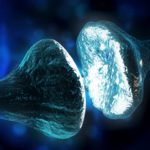In a new paper, published in Scientific Reports, a team of researchers found that larger parts of the cerebral cortex contribute to the perceptual awareness of touch than previously thought.
The findings were reached from analyzing structural magnetic resonance imaging (MRI) scans and examinations reports of 70 patients: 35 with brain lesions in the left hemisphere of the brain and 35 with lesions in the right hemisphere.
In the study, the participants suffered from hypoesthesia, exhibiting impairments in touch perception. From the findings: “Which brain regions contribute to the perceptual awareness of touch remains largely unclear.”
“We collected structural magnetic resonance imaging scans and neurological examination reports of 70 patients with brain injuries or stroke in S1 extending into adjacent parietal, temporal or pre-/frontal regions.”
“We aimed at deciphering those regions in and adjacent to S1 associated with an impaired perception of touch (i.e., hypoesthesia).”
Based on their assessment, researchers found different areas associated with a reduced sense of touch, validating previous studies and establishing new areas of the brain never before discussed.
The somatosensory cortex, in addition to the prefrontal cortex and posterior parietal lobe, were all regions of the brain correlated with the perception of touch.
“The study shows that the brain network responsible for the perception of skin contact is much more complex than previously thought,” researchers concluded.


